A HEALING OPERA
IN 3 ACTS
20 MINS DIGITAL FILM
With installation and live performance
2022
This project was made for my MA degree show at Goldsmiths College. Using a range of archive footage, taken by me over the lockdown period in Portugal and the UK, I created a three-act film that explores feelings of solitude and grief. Inspired by somatic healing and Buddhist meditation practices, I created a film to show my personal steps to feel connected with myself and all beings, and the transformative journey of my thoughts into complex bodily sensations. In the first act, a pigeon story helped me to speak about the trauma of loss, and about solitude and alienation related to depression and neurodiversity. The second act takes inspiration from the song “Upside-Down Cake”, creating space for diversity and self-compassion. The third act starts with images of death and rebirth as a clumsy transformation, before a personal and noisy reclaim of queerness, joy and self-expression.
The installation space was designed to complete a holistic experience of comfort and healing. I used mainly recycled materials, including carpets and curtains. Custom furry headphones provided an immersive auditory experience. Plush velvet pillows were nestled amidst a mountain of teddy bears, enveloping the film audience in a warm, collective embrace. Alongside my cherished bear, FAVORITO, who joined me in wearing a pink uniform, we served as the ushers of our exhibition space, distributing the Healing Opera’s Libretto. Our uniform bore the motto “ALONE”. Additionally, Favorito delivered a captivating performance in both Act 1 and Act 2 of the film.
The intimate view of the film was interspersed with live performances by musician and drag artist Fruity Pebblez, who also composed the film’s soundtrack.
A Healing Opera represents the start of my professional collaboration with teddy bears.
Film Excerpts (2min):
Film Stills:

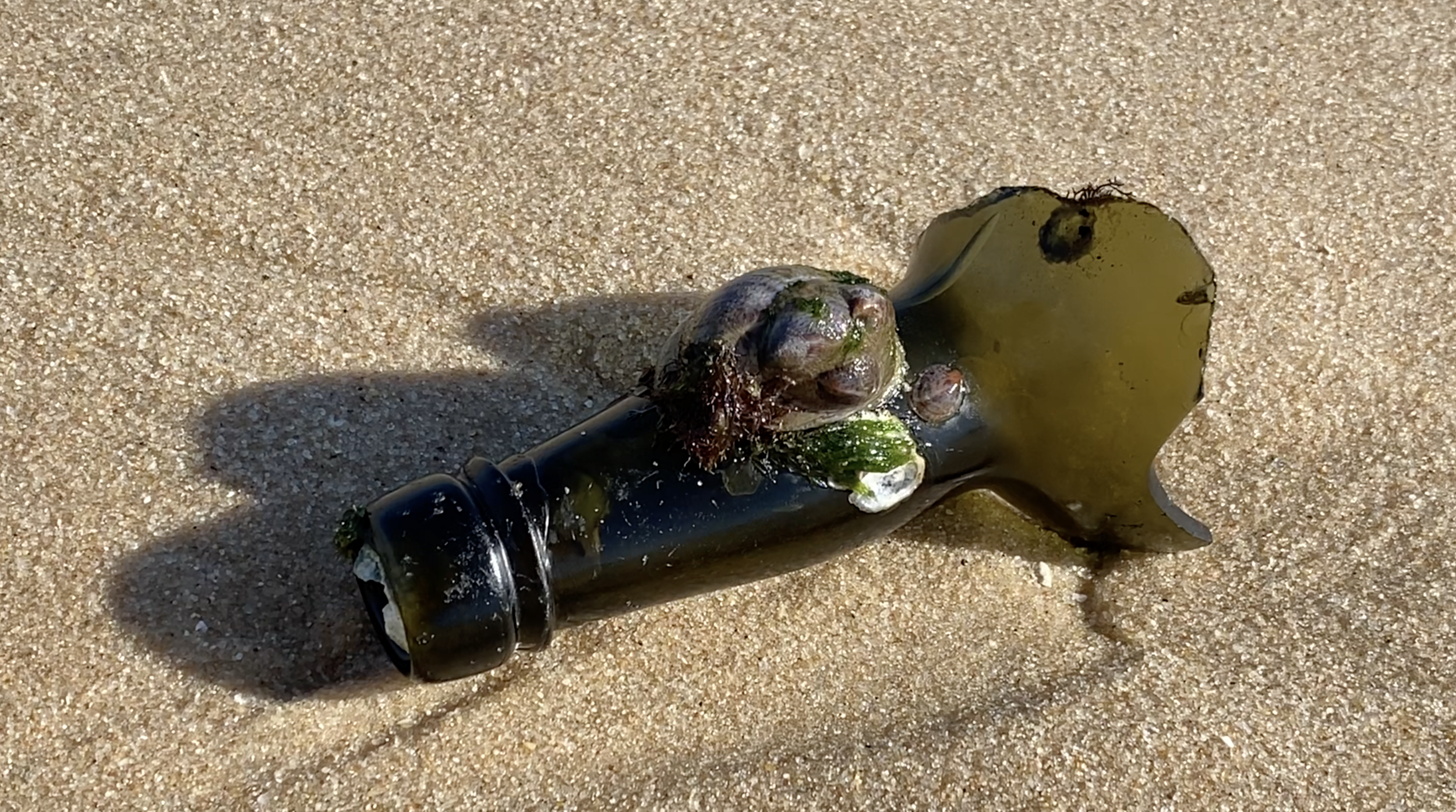



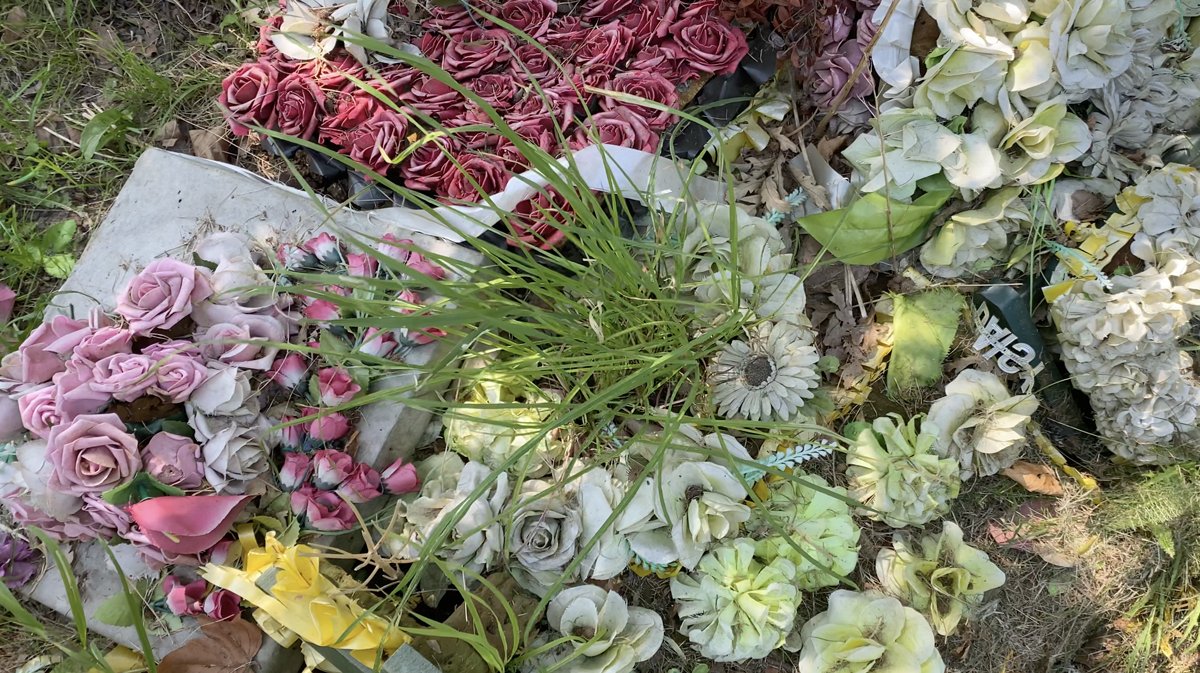
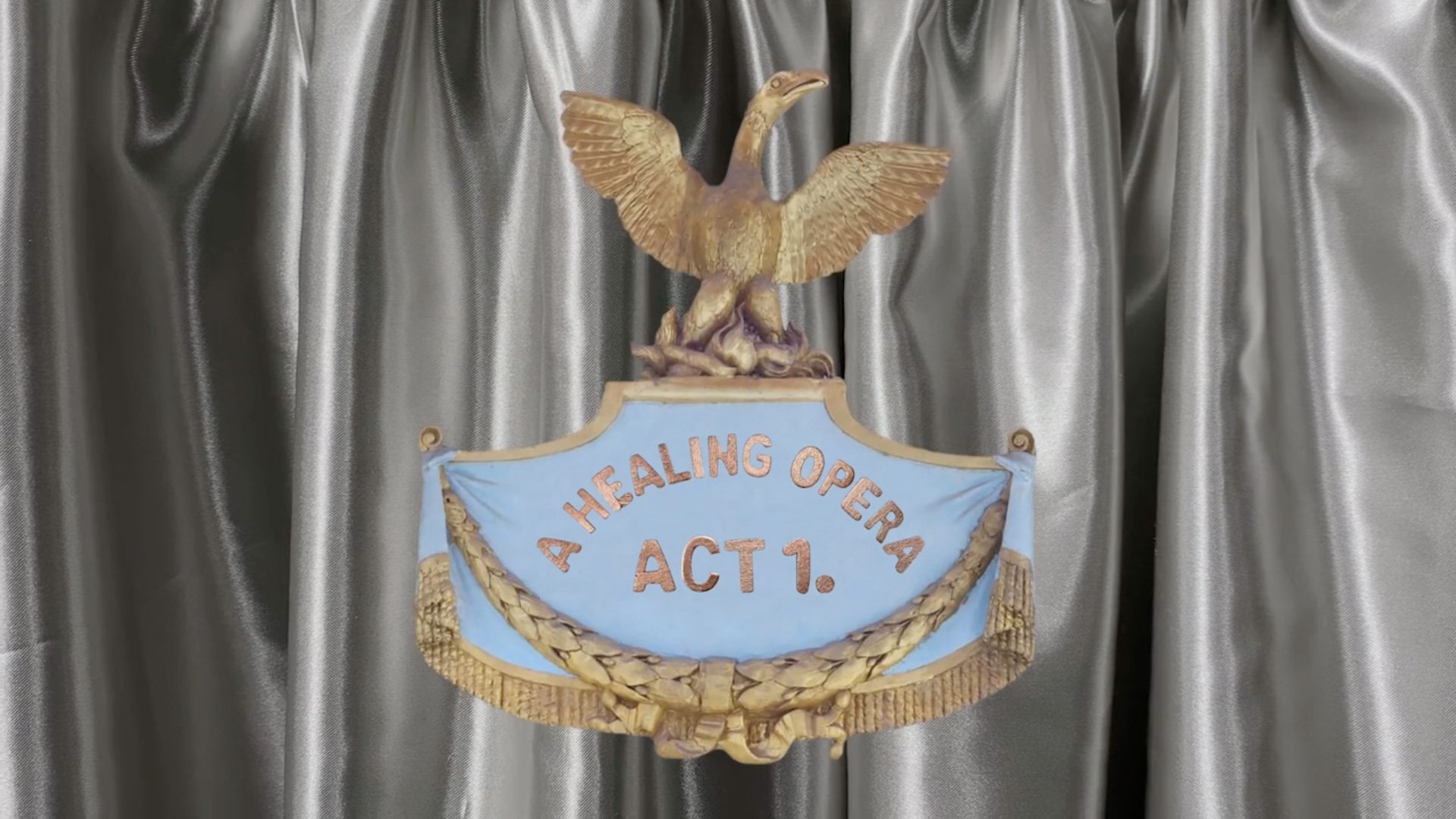
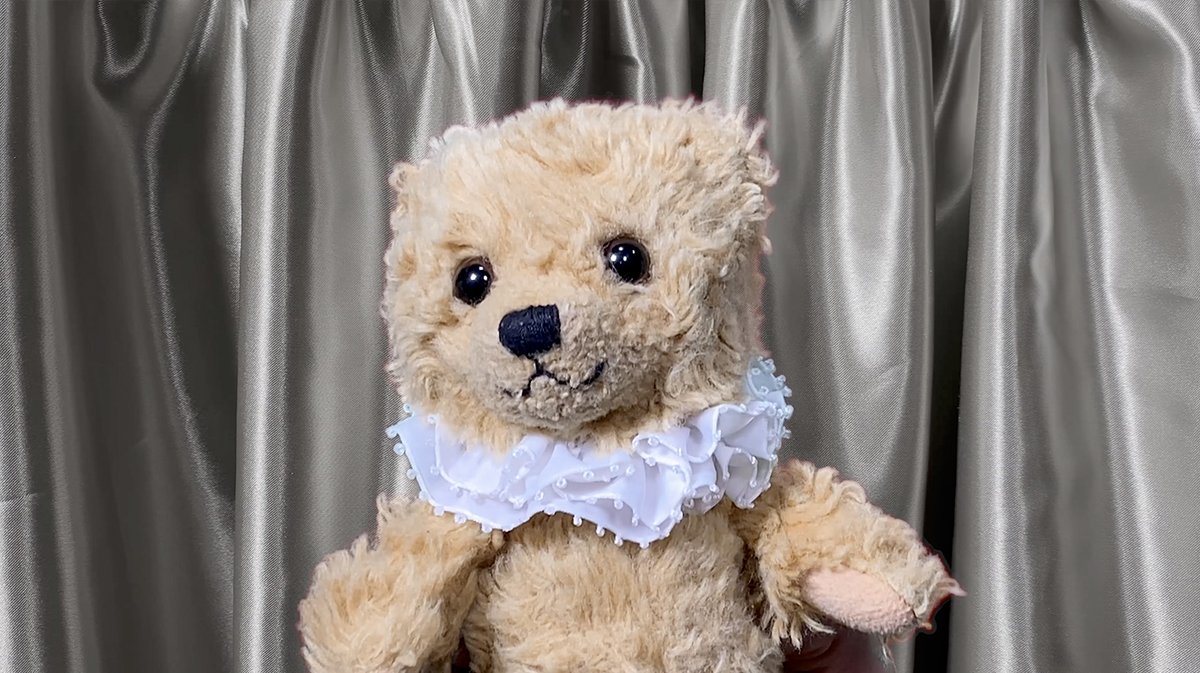
Goldsmiths Installation / Performance:
“…A work that invites us to experience the therapeutic value of rockpools and teddy bears while also including the disturbingly absurd and creepily dissonant image of a teddy getting a bath and the tragic idea of a widowed pigeon losing the power of flight.
Her seating area constructed from a huge bevy of teddies immediately creates a welcoming vibe that I can only describe as off-kilter baroque kitsch.
The film is uplifting fun with much visual delight including some amazing footage which captures the trope of tree shadows on rippled water in an entirely novel way; a filigree pattern dancing over the surface. Act 2 includes a song composed by Fruity Pebblz that invokes our sympathy for the confused world experienced by an upside-down cake and in Act 3 we get a soothing tour of a photogenic rockpool with undulating anemones and cautious explorative limpet crabs taking centre stage.
The artist has succeeded in her aim of demonstrating the value of interactions with “non-human metaphorical presences.” We just have to absorb the beauty to get a sense of peace.”
Posted on July 27, 2022, by mialondonblog

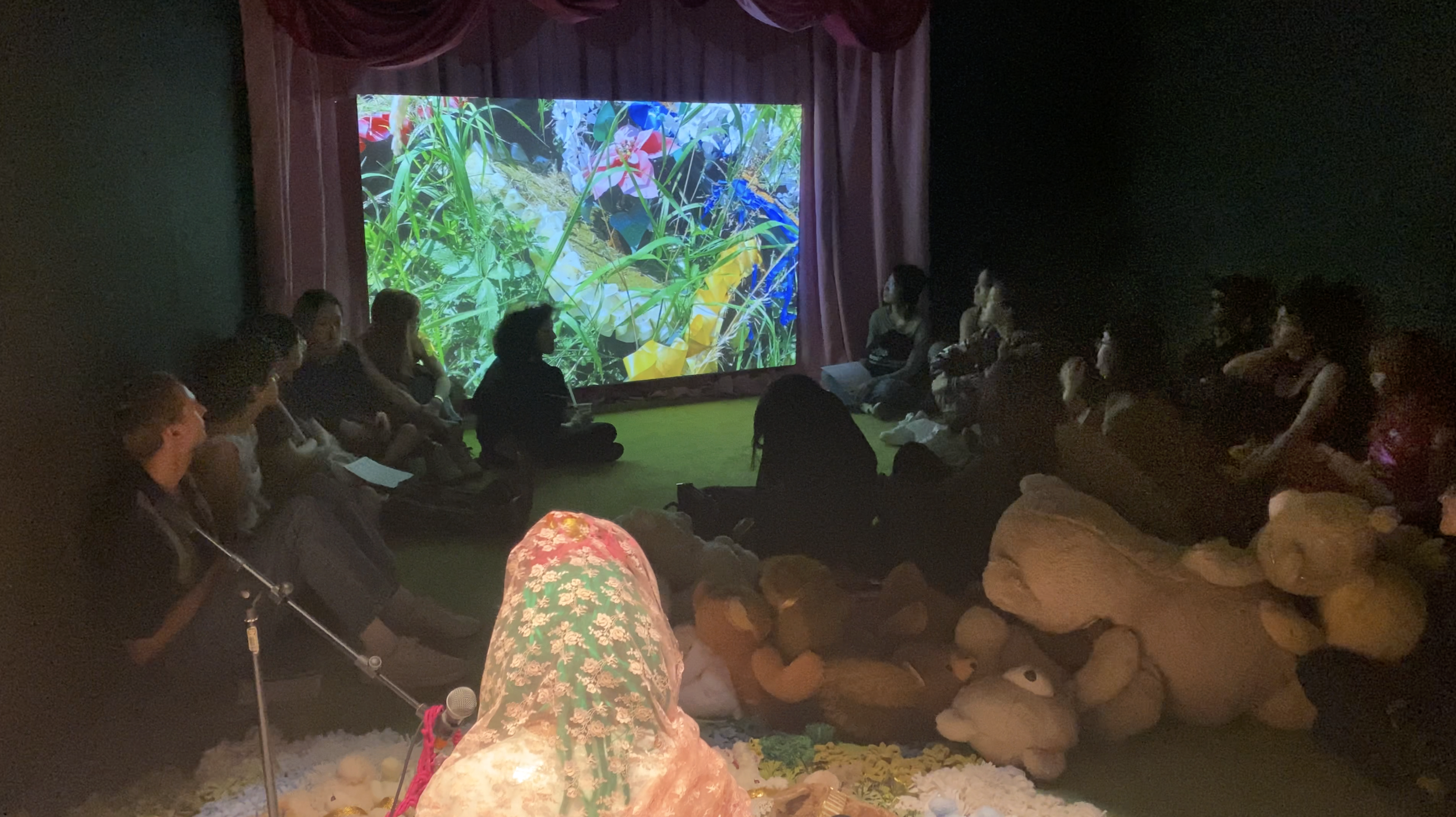


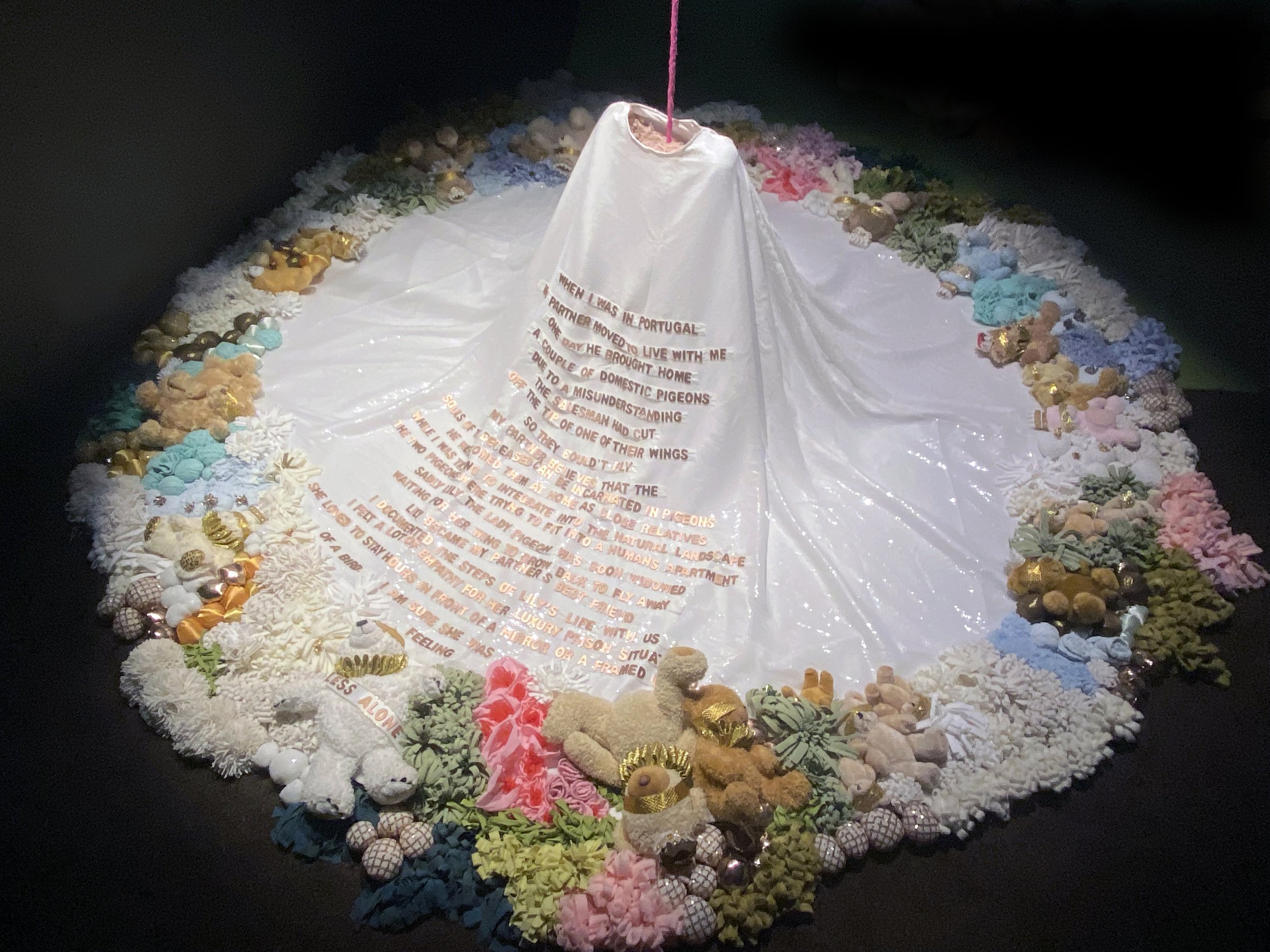



Lily the pigeon, the healing cloak AND THE BEARS
“In June my partner N moved to live with me. One day he brought home a couple of domestic pigeons. Due to a misunderstanding, the salesman had cut off the tip of one of their wings so they wouldn’t fly. N believes that the souls of the deceased can be incarnated in pigeons. He welcomed them at home as close relatives.
While I was trying to integrate into the natural landscape, the two pigeons were trying to fit into a human’s apartment.
Sadly Lily, the lady pigeon, was soon widowed. Waiting for its wing to grow back to fly away, Lily becomes N’s best friend. I documented the steps of Lily’s life with us. I felt a lot of empathy for her luxury prison situation. She was loving to stay hours in front of a mirror or a framed photo of a bird. I am sure she was feeling less alone. “
I wrote the story of my friend pigeon Lily for A Healing Opera (Act 1). Lily helped me to find words for loss and grief. Lily's story is gradually forgotten during the film, in favour of queerness and joy in Act 3.
I composed Lily’s story with golden letters and placed them precariously on a shining “healing cloak”. I decorated the clock with supporting teddy bears and soft flowers, made by hand with recycled fabric and blankets with the help of a group of generous friends.
I hired a large number of bears for this project, primarily from charity shops in South London, earning me the title of “Bear Lady.” Some of these bears were rescued from challenging situations, including being discarded in a skip. All of these bears continue to live on and collaborate with me and Favorito.
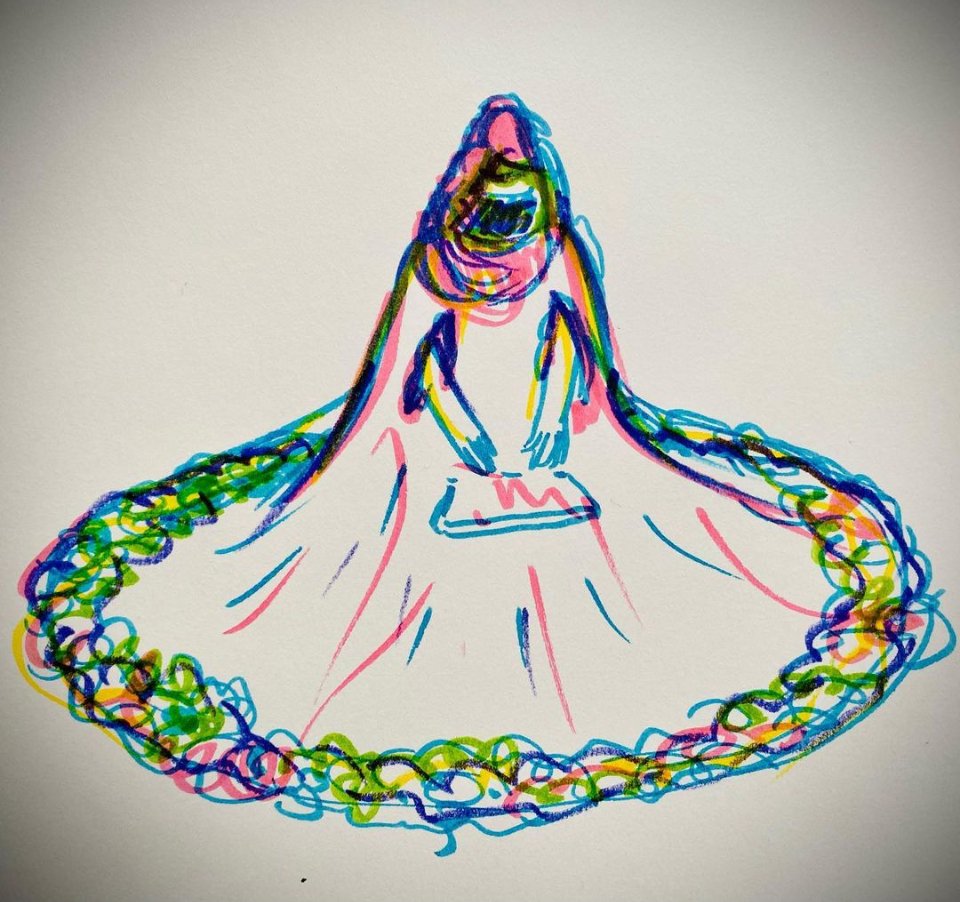



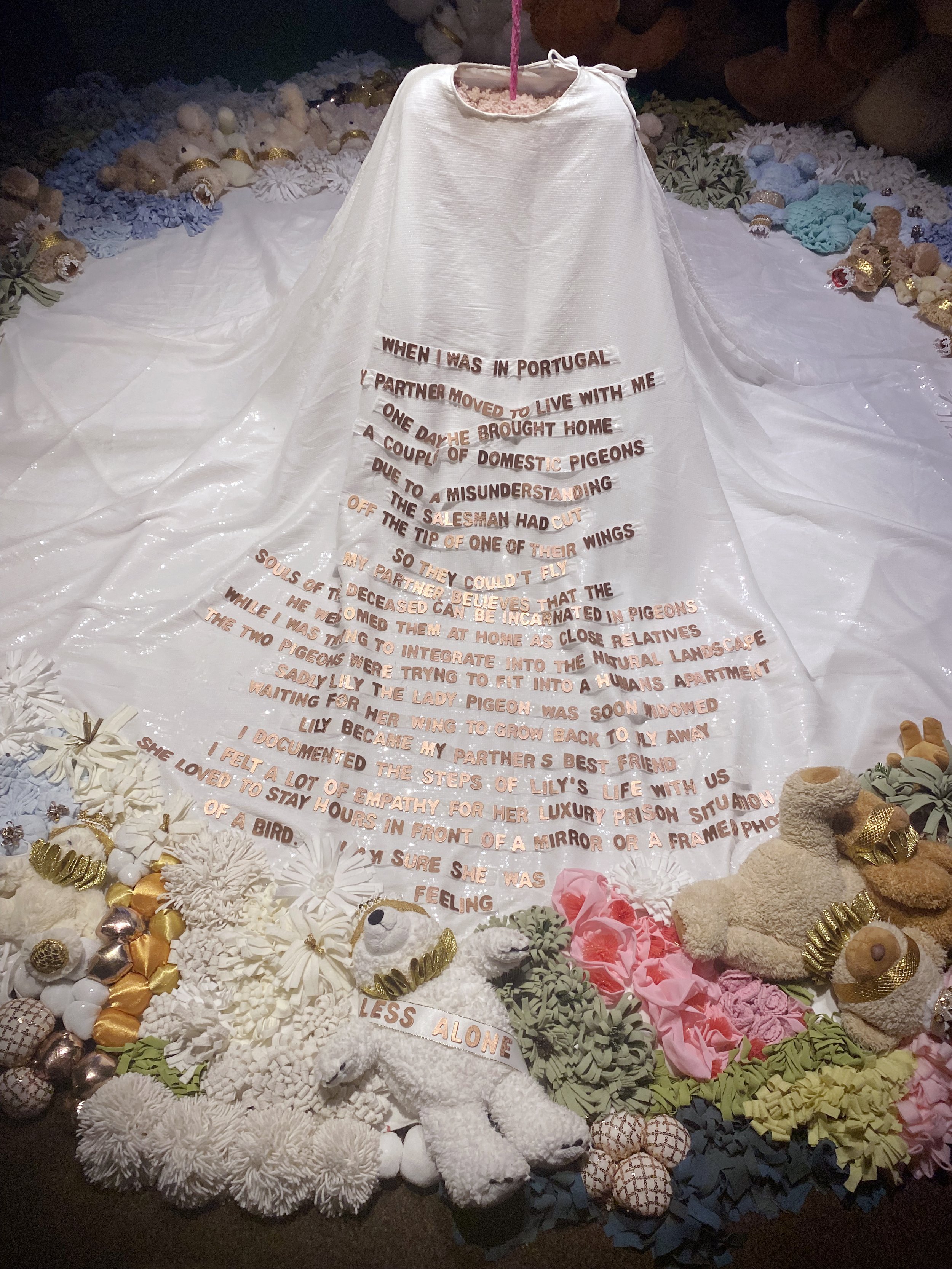

FROM THOUGHTS TO SENSATIONS
My film practice was born during pandemic times, by a desire to heal my feelings related to solitude, and to create a safe place for me to mourn. I called my archive of videos Looking For a Friend, as it was created while I was walking in desolate landscapes looking for a friendly nonhuman presence to film and spend some time with. Working with my mobile phone, the slow-time I dedicate to filming has unexpectedly become an instinctive but organized ritual, very similar to grounded meditation. I was looking for self-healing and, somehow, I got there while walking and filming. Later on, I would learn and experience a more complex and complete meditation practice called Vipassana, a meditation technique practitioners claim was invented and practised by Buddha. These meditation techniques have in common an awareness that the depth of our soul is more connected to our body than our superficial thoughts (those thoughts responsible for rationalizing and logical thinking). Restoring a connection with our body through meditation is reconnecting with our soul, and in psychoanalytic terms, this can be read as a reconnection with the subconscious. Harmful and destructive thoughts are not pushed away through the imposition of new positive thoughts, but through the ability to experience them as bodily sensations. Meditators explore the body/mind connection as one, a non-duality. Thoughts are finally allowed to arise, be examined dispassionately, and be allowed to fade, without the practitioners being emotionally influenced by their contents (Gethin, 1998) (Krygier, Heathers, Shahrestani, Abbott, Gross, Kemp, 2013). My film A Healing Opera, edited from my mobile phone footage archive, represents the non-linear transformative journey of my thoughts into sensations.
The difficulty in elaborating a trauma is particularly hard when the trauma corresponds to a taboo for the society to which one belongs, such as abortion or HIV. “Grief needs a community" (Pearson Clarke, 2019). Our body can be a comfort zone and a creative laboratory to transform thoughts into sensations, but loneliness and social injustice remain a problem to face when confronting trauma. Camille Sapara Barton "visions a world in which care, empathy and trauma informed embodiment practices are woven into daily life, as well as efforts towards systems change. It is necessary to cultivate an embodied, rather than simply rational, understanding of the entangled issues we face so we can reduce harm, grieve, grow solidarity and re-pattern issues such as the ecological crisis and systemic racism" (Barton, 2020). Embodiment can be a starting point for effective social change.
INTERBEING, EMPATHY AND IMAGINATION
A change of perspective concerning my perception of loneliness came from Buddhist teachings. Thich Nhat Hanh coined the term “INTERBEING” to replace the verb "to be", meaning to inter-dependently co-exist. Embracing this vision, I never feel alone in the midst of the most desolate landscapes. Working to connect with my inner self helps me to be more connected and empathetic also with everything around me, and to feel less alone. These invisible connections between beings are tangible and fascinating to explore creatively. I feel free to form an intimate friendship and an artistic collaboration with a tiny weed, with a capricious breath of wind, or a second-hand teddy bear bought in a South London charity shop.
“Imagination and empathy allow humans to build political coalitions across divides such as race and sexuality, and to identify across species in ways that benefit the biosphere rather than the individual, the nation, or the corporation” (Seymour, 2013).
“There is an argument that allegorical or metaphorical thinking is delimiting and has the capacity to reduce the importance of learning from plant life. However there is a force in ‘story’ and in ‘metaphor’ that carries the relevance of vegetal life to a broader audience in order to avoid ecological catastrophe” (Gibson and Gagliano, 2017).
SYNAESTHESIA AND TOUCH
In exploring the sensorial potential of my work, my goal is to activate synesthesia. Mirror-touch synesthesia, also known as sight-touch synesthesia, occurs when stimulation of one sensory modality (such as sight) triggers a perception in another modality (such as touch) without direct stimulation to the second modality. The awareness of these synesthetic perceptions can vary greatly from person to person. Diverse meditation techniques aim to stimulate synaesthesia awareness in order to perceive the body and mind as a unique entity. A synaesthetic sensorial activation can be particularly important in video art, overcoming the sensorial limitations of a screen. We should remember that the location and distinction of the senses are humanist concepts, and now a matter of research and debate; synaesthesia should form part of a holistic vision of the bodily experience.
Developing my installation project and collaborating with teddy bears, I dedicated special attention to touch. Much happens in a touch. Research has widely uncovered the poor health outcomes of being deprived of touch. Touch calms our nervous system and slows down our heartbeat. Human touch lowers blood pressure and cortisol (the stress hormone); it triggers the release of oxytocin, a hormone known for promoting emotional bonding with others. Studies using PET scans have shown the obvious: the brain responds less to stress when a person's hand is held. And, even thought the effect is most significant when the hand being held is that of a loved one, a stranger’s hand still triggers the effect (Field, 2010) (McNichols, 2021). The effect of touch on a body can be misleading. It makes too strong a distinction between body and world, as taken for granted in neuroscientific studies of synaesthesia. In contrast, for someone who is neurodivergent, observing touch on others can elicit a conscious experience of touch and a change in the mental representation of their self, blurring self-other boundaries; tactile experience becomes shared and alters the assumed contours of the body, the distinction between body and world, between self and other. This skill goes beyond just feeling texture, heft, shape, and temperature and was described as the feeling of becoming oxygen of another being, human or non-human. Probably these complex feelings are described as synesthetic only for the lack of other words. Touch always implicitly interacts with the other senses. To touch is to feel with, to be in experience, affected by it. “This is metatactile sensing, to connect to the quality of an encounter as much as to the actual shape of the surface with which one comes into contact, to feel with the encounter, coming into contact with the complexity of relations the encounter calls forth” (Nirta, Mandic, Pavoni, and Philippopoulos-Mihalopoulos, 2020).
UNATTRACTIVE NATURE, ECO-GRIEf AND SOLASTALGIA
For humans living in an urban context, the foundations for a connection with nature are laid in childhood. When children are young, they do not connect with something as abstract as the entire natural world but instead with particular flowers, trees, little insects, worms. Children usually have little concern for abstractions that matter to adults. This way of children, starting from small ordinary elements, can also be effective for any adult human who wants to reconnect with the natural world. Establishing a relationship with tiny natural elements can be particularly satisfying and meaningful in a "cementified" urban landscape. In film practice, this kind of vision can be suggested by the use of close-ups. Close-up shots are also widely used in ASMR videos, to activate a pleasant sense of intimacy and closeness. In addition to considering these issues, my art practice is conditioned by neurodiversity. I am dyspraxic, therefore my attention is typically struck first by details than by the totality of things. My eyes find refuge and beauty in the details I choose, while the whole landscape can confuse and discourage me. I find it easier to start an intimate conversation with a small individual plant than with an entire forest.
A human connection to nature is usually very selective. Nature is beautiful landscapes, cute furry mammals, and majestic tigers, and also hurricanes, cancer, coronavirus, extinction events and climate change. Generally, when people talk about wanting their children to connect to nature, they are less keen on the harmful parts. Visual artists who represent nature in their work can feel the same hesitation as these parents. Children may inherit from their parents a nostalgia for a world that is no longer available, feeling dissatisfied and unfit for modern society. It would seem best to prepare children for such a future that is increasingly likely (Larson, Fischer and Clayton, 2022), and is akin to evaluating whether or not it is appropriate to announce the death of their grandparents.
In 2003 Glenn Albrecht was the first to describe a new form of psychological distress that people, not only children, may suffer:
“As opposed to nostalgia (the melancholia or homesickness experienced by individuals when separated from a loved home) solastalgia is the distress that is produced by environmental change impacting on people while they are directly connected to their home environment”. (Albrecht, Sartore, Connor, Higginbotham, Freeman, Kelly, Stain, Tonna, Pollard, 2007)
In other words, you may feel homesick also by staying home if your home has become unrecognizable. Another relevant expression is “ecological grief” which brings us back to feelings of human loss. Ecological grief is a legitimate form of grief felt in response to experienced or anticipated losses in the natural world (Cunsolo and Ellis, 2018). The eco activists of Extinction Rebellion frequently use funeral symbolism such as coffins, silent processions, black veils to create a space where ecological grief can be openly acknowledged and expressed (Dillon, 2019). They assert that eco-grief is as overwhelming as the loss of a loved one. “If you fully accept the science and everything that we may lose as a result; a stable climate, a fertile planet, our children’s security; a tsunami of emotions ranging from despair to disbelief swiftly follow. Acceptance of the scientific truth means you then have to process a fatal diagnosis. With eco-grief the diagnosis is not just for you but for every single living thing” (Leake, 2019).
Research has indicated that solastalgia can have an adaptive function when it leads people to seek comfort collectively, and can lead to resilience and growth, like other mourning emotions. A collective conversation can allow for emotions to be processed and reflective function to be increased (Kieft and Bendell, 2021).
Urban nature, typically seen as sick and limited compared to wildness, generates these kind of sad feelings, but it’s still essential for humans. It absolutely deserves to be connected with, as it is the only nature we urban citizens have. It is essential, especially if we embrace the concept that there is no hierarchy and judgement among beings. I find much inspiration for my work in polluted urban nature. I consider the weeds that grow between the cracks in concrete as my masters of resilience; I find that I have more in common with them than with untouched wild vegetation.



